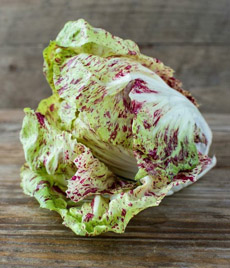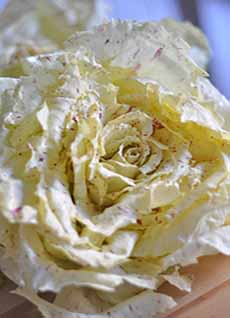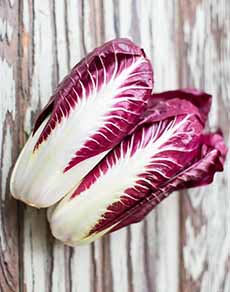TIP OF THE DAY: Lettuce Crudites
|
|
In the U.S., for decades upon decades, ladies setting a fine table began dinner with a crystal, porcelain or silver “relish tray.” This typically consisted of raw carrots, celery sticks and radishes, plus gherkins and olives. No dip, just veggies. The relish tray, often made with sections to separate the items, was meant as a quick bite until the first course arrived. It was an Americanization of the French dish called crudités, which could comprise raw vegetables of every description, artfully cut and arranged on a platter. There was no creamy dip, as many Americans serve today, but a vinaigrette with minced fresh herbs. In the U.S., the concept has evolved to include much of which is in the produce department.Many of us even call our raw vegetable plate crudités (CROO-dih-tay). In our home, where “more is more,” this meant quite the spread: Bell pepper strips, broccoli and cauliflower florets, carrots and celery (of course!), cherry tomatoes, cucumbers, endive, green beans, mushrooms, radishes, scallions, snow peas or sugar snap peas, zucchini and/or yellow summer squash. In essence: it meant (and still means) anything that tastes good raw and can easily be picked up and dipped. We’re happy to have leftovers for the next day. If you have too many, steam some of them. Here’s more about the history of crudités in America. Recently, we came across this photo (photo #1) from Empellón restaurant in New York City: An assemblage of beautiful lettuces, including radicchio and chicory, served crudites-style with a dip. Note that in addition to categories we think of as lettuce—bibb lettuce, Boston lettuce, iceberg lettuce, leaf lettuce and romaine—these are also fall in the lettuce category: While the farmers markets still have a beautiful assortment of lettuces, serve it with whatever dip you like—from a light Dijon vinaigrette to chunky blue cheese (recipe below). In addition to the familiar, try the unusual. Whatever you pick should be firm enough to dip. |
|
|
RECIPE: CHUNKY BLUE CHEESE DRESSING & DIP This dressing is good enough to eat by the spoonful. Try it on different styles of potatoes, too. The better the blue cheese, the more delicious the dip. Ingredients 1. BLEND the milk and distilled white vinegar in a medium bowl. Let it sit for 5 minutes, then stir. [This creates buttermilk—a good tip for when you have a recipe that requires a small amount. To make a cup of buttermilk, add a tablespoon of distilled white vinegar (not white wine vinegar) to a one-cup measure. Fill to the rim with milk and let stand five minutes.] 2. ADD the blue cheese to the buttermilk, and mash with a fork until the mixture is combined. 3. ADD the sour cream, mayonnaise, white wine vinegar, sugar, garlic powder, black pepper and salt. Mix with fork to combine. 4. PLACE into a container with a tight seal. Refrigerate and let set for at least 4 hour; preferably overnight. _________________ *Pronounced tuhr-WAH, terroir is the French expression for sense of place, the unique environment in which something grows—its specific soil composition and microclimate. Microclimate includes temperature, amount of sunshine and rain. The flavor nuances of agricultural products, from grapes to olives to milk to cacao, is a function of its terroir. †There are numerous varieties of every green, including radicchio (rah-DEE-key-yo) and chicory. Many of them have common ancestors, and can look similar. With radicchio, an Italian leaf chicory, there are different varieties, each named after the region in Italy where it is grown. The most common variety in the U.S. is radicchio di Chioggia (pronounced key-YO-guh), a round, tightly-packed head of dark maroon leaves with thick white veins.
|
||






